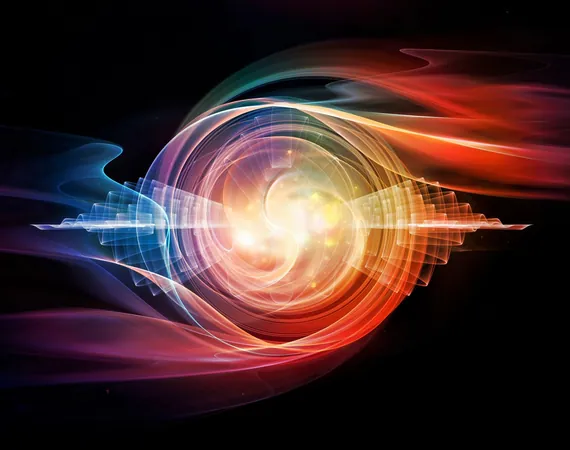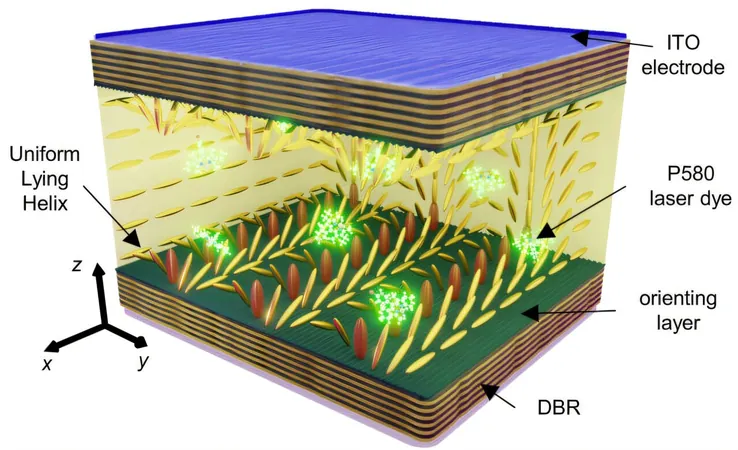
Revolutionary Study Unveils Quantum Secrets Behind Light's Interference Patterns!
2025-05-04
Author: Mei
Unlocking the Mysteries of Light
For centuries, light's enigmatic nature has captivated scientists. The belief that it behaves both like a wave and a particle has been fundamental to quantum theory, but groundbreaking new research may redefine our understanding.
The Double-Slit Experiment's New Twist
The iconic double-slit experiment, first demonstrated by Thomas Young in 1801, showcased light’s wave-like behavior through striking interference patterns. However, recent findings suggest that we might not need to view light merely as a wave anymore.
Led by Gerhard Rempe of the Max Planck Institute for Quantum Optics, a team of researchers from Federal University of São Carlos and ETH Zurich has proposed an innovative interpretation: those intricate interference patterns can also be explained using quantum particles, transcending traditional wave theories.
Shifting Perspectives on Light
As quantum mechanics emerged, pioneers like Einstein and Bohr complicated the picture by introducing concepts such as photons and wave-particle duality. Now, Rempe’s team has taken this discourse further, suggesting that light can exhibit its interference via a combination of detectable and undetectable photon states.
Hidden Photons: The Game Changer!
Central to this new theory is the concept of 'bright' and 'dark' modes. Bright photons interact with observers, whereas dark photons remain elusive, potentially residing in areas where we typically expect light to cancel out. This radical view reimagines how light interacts with matter, even at spots thought to be devoid of photons.
Rethinking Wave-only Theories
While classical physics effectively explains everyday optical phenomena, certain quantum optical experiments challenge wave-based theories. Rempe's findings argue that interference patterns are statistical representations of how these quantum states—bright and dark—interact, putting particles at the forefront of the equation.
Measuring the Unmeasurable
Every attempt to track a photon’s journey through two slits invokes the uncertainty principle, which can spoil the interference pattern. Interestingly, this research suggests that measuring photons isn’t just about detecting their momentum, but rather transforming a dark state into a bright one for observation.
Implications for Future Technology
This pioneering model might open doors to innovative light detection methods in supposedly empty spaces. Researchers are already exploring futuristic technologies that could leverage these dark states, aiming to create refined systems for exploring light’s hidden realms.
A Quantum Leap in Understanding Light
The implications of this study extend far beyond light alone. Scientists are probing how these quantum insights might revolutionize our understanding of other physical phenomena, including gravitational waves. While skeptics maintain that wave-based approaches succeed in larger contexts, the upcoming debate over the necessity of this quantum viewpoint is sure to be electrifying.
The Future of Light Unveiled
Could this shift in perspective transform our grasp of light’s true nature? If researchers can unravel these quantum complexities in broader experiments, we may witness a renaissance in both theoretical understanding and practical applications. The study, released in the prestigious Physical Review Letters, marks a pivotal moment in physics.


 Brasil (PT)
Brasil (PT)
 Canada (EN)
Canada (EN)
 Chile (ES)
Chile (ES)
 Česko (CS)
Česko (CS)
 대한민국 (KO)
대한민국 (KO)
 España (ES)
España (ES)
 France (FR)
France (FR)
 Hong Kong (EN)
Hong Kong (EN)
 Italia (IT)
Italia (IT)
 日本 (JA)
日本 (JA)
 Magyarország (HU)
Magyarország (HU)
 Norge (NO)
Norge (NO)
 Polska (PL)
Polska (PL)
 Schweiz (DE)
Schweiz (DE)
 Singapore (EN)
Singapore (EN)
 Sverige (SV)
Sverige (SV)
 Suomi (FI)
Suomi (FI)
 Türkiye (TR)
Türkiye (TR)
 الإمارات العربية المتحدة (AR)
الإمارات العربية المتحدة (AR)